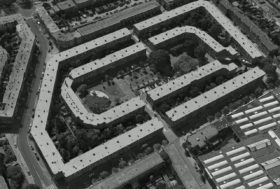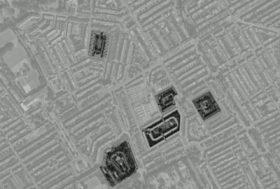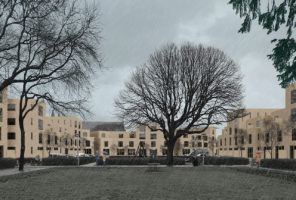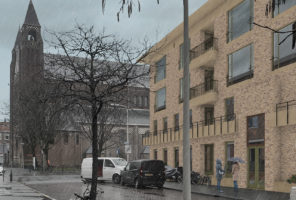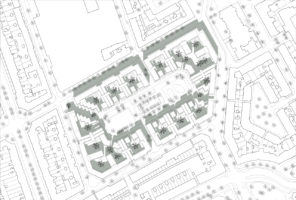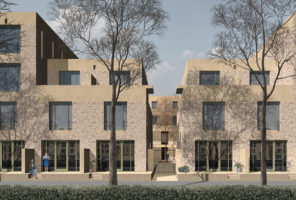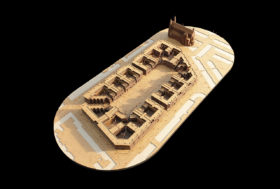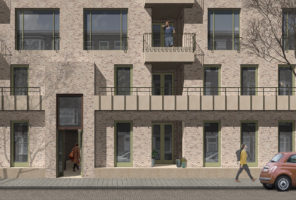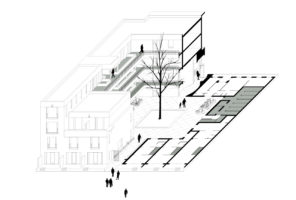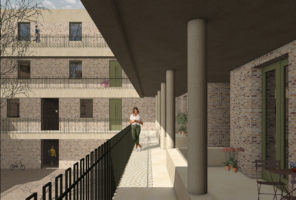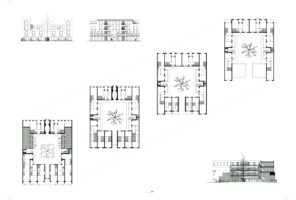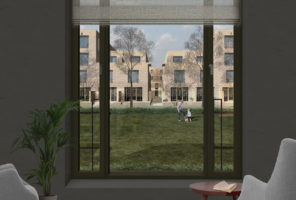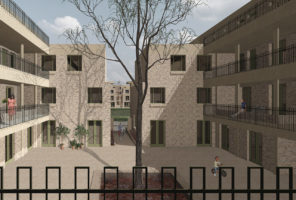Weigeliaplein
400 dwelling, The Hague Heesterbuurt
Public sector
Client: Haagwonen, The Hague
2019
Weigeliaplein is a particular urban space in the Heesterbuurt district. Based on an urban design made by H.P. Berlage, two closed perimeter blocks with a street in between were joined together and redesigned as one single ensemble in which a hidden neighbourhood park was made. These ‘park ensembles’ occur on other places in Heesterbuurt as well. The most renowned example is Papaverhof, designed by Jan Wils. Wils raised a problem which also presents itself at Weigeliaplein: only one quarter of the dwellings sit at the park, the remaining dwellings sit at the surrounding city streets.
The design study for new housing departs from the keeping of the neighbourhood park and the built-to lines of the blocks. Only at the East side a new access street is made. The domestic typology makes use of the Italian urban palazzo typology. The palazzo has its front door (the portone and the androne) at the outer side of the block and a connection to the park on the other side. Through the court of the palazzo all dwellings are oriented to the park. Here houses can be made with slightly raised terraces facing the park. The park itself can remain free of cars. Through the modular layout and the the re-use of the existing building envelope, the project can be built in phases easily.
A design statement was published in La maieutica della città, Contributi sul progetto urbano e architettonico and can be downloaded here (English only).
